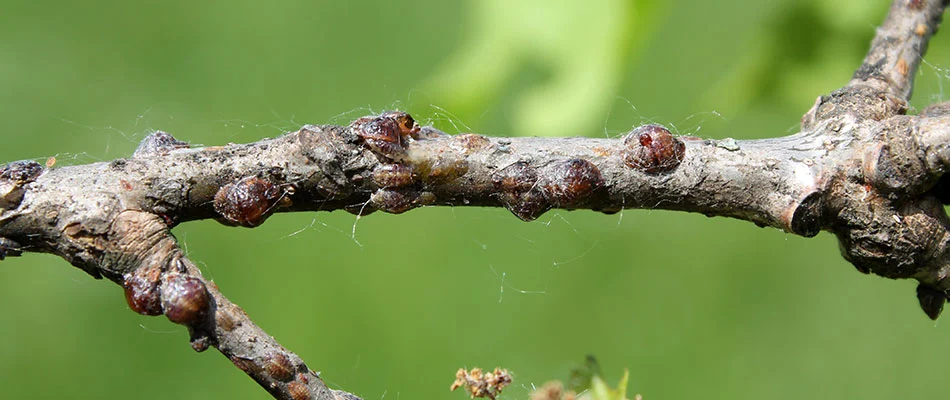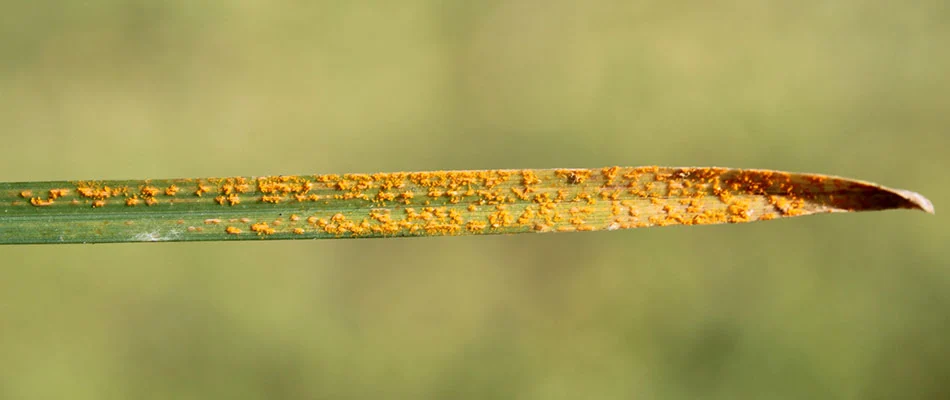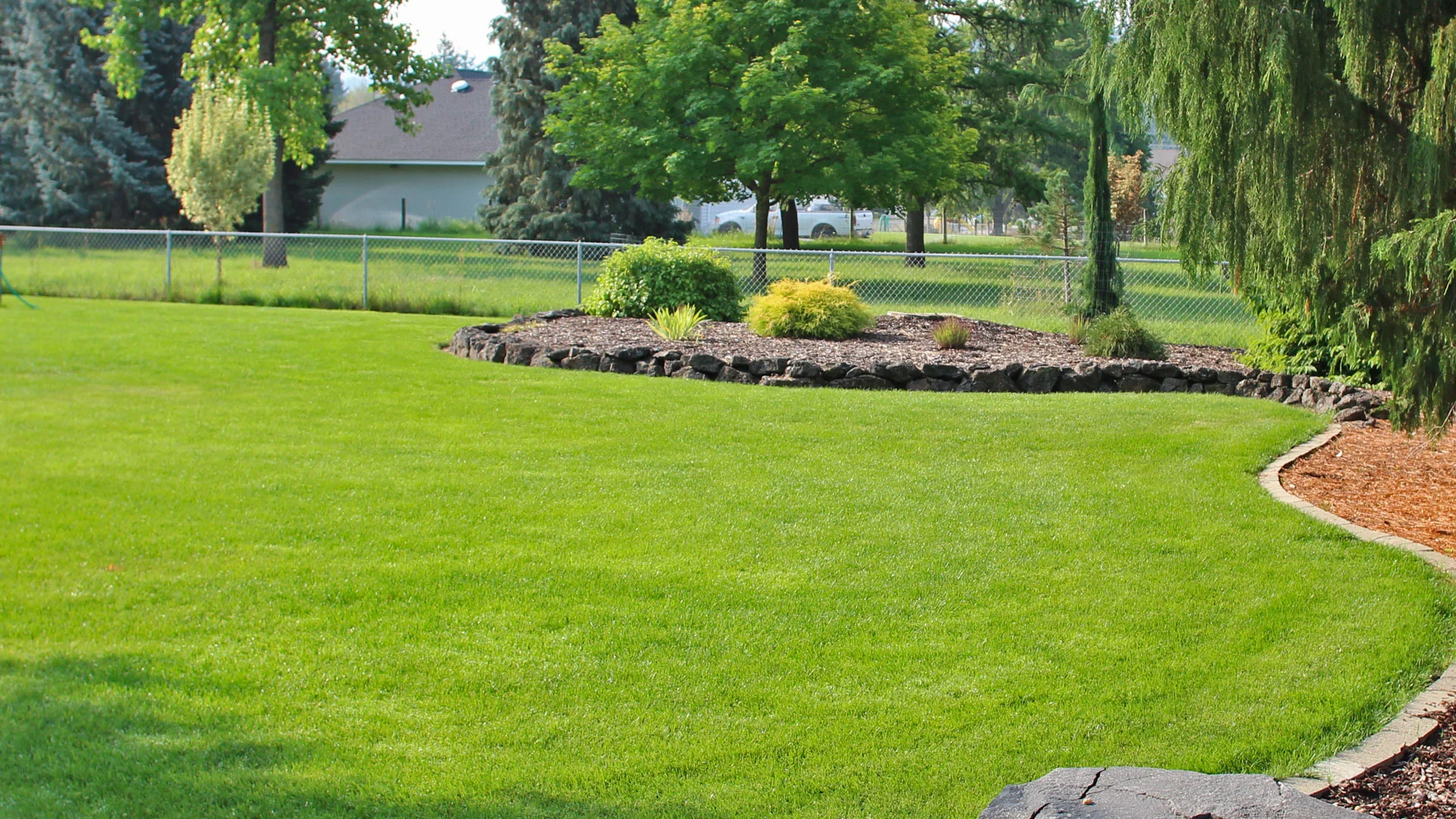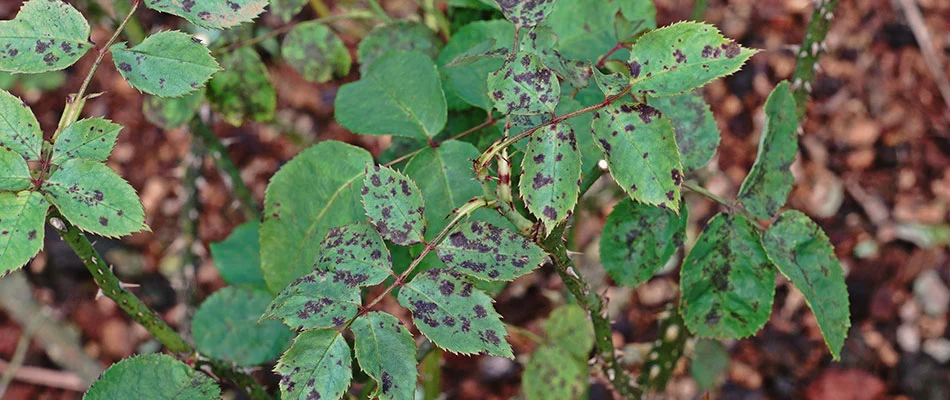In our area of Washington, we have many different types of plants, shrubs, trees, and bushes. These provide beauty and excellent scenery, but they are susceptible to many threats.
When these plants and trees aren’t properly fertilized, they lose the strength to fend off insects and diseases. Here are some common diseases that plague plants in the areas of Spokane, Spokane Valley, and Liberty Lake, and how we can work to help prevent them from destroying the plants in your yard.
Lecanium Scale Infests Many Plants, Sucks Sap Out of Branches & Leaves

Lecanium scale is actually a type of small insect, and there are several types of this pest. They like to invade plants and trees that produce sap such as birch, oak, dogwood, maple, and fruit trees. In other words, they may end up infesting pretty much any kind of tree, even some evergreen trees.
Typical signs of this include leaves wilting and a sticky substance that the scale puts out. This sticky substance can accumulate and become a haven for mold. As this builds up, it begins to block light and air that is needed for photosynthesis to occur. Scale starts to develop during the winter and then feeds during the summer. They spread to other trees as the leaves begin to fall.
To control these invasions, it’s best to be proactive and keep inspecting plants and trees for any signs. These are best killed with chemical treatments applied by a professional who is licensed to use them.
Professionals can apply these chemical treatments in a way that will not kill helpful pollinators.
Black Spot Grows in Spring, Can Spread Quickly Through Wind & Water
Black spot is a fungal disease that can affect any plant with fleshy stems, even though it’s typically associated with roses. This disease starts to grow in the spring and can spread pretty quickly through the wind and rain. It doesn’t slow down until temperatures climb to 85 degrees. Signs of black spot include tiny black spots on leaves that begin to get yellow rings around them. Eventually, the whole leaf will turn yellow and fall off of the plant.
With black spot, it’s best to apply preventative fungicide treatments before conditions become ideal for this disease to start developing. Plants will need to be inspected for black spots. Additionally, try to water plants when they will be exposed to the most sunlight.
Plant Rust Is Commonly Found on Daylilies, Roses, Snapdragons, & More

Plant rust is another common fungal infection in our area. It thrives when leaves are wet, so it’s recommended to try and water plants at the root or to water early in the morning so that excess water evaporates in the sunlight.
This disease is characterized by the appearance of orange spores that grow on the underside of leaves, and white to yellow spots that show up on the top of the leaf. It’s commonly found on plants such as roses, snapdragons, daylilies, crabapples, and more. This disease will need to be treated with a fungicide and infected plant branches and leaves will need to be removed to stop the spread of the fungus.
Need help getting rid of plant diseases at your property?
At Sure Green Lawn & Tree Service, we work every day to establish shrub and tree health throughout the areas of Spokane, Spokane Valley, Liberty Lake, and nearby cities.
Call us at (509) 927-6767 to set up a consultation and to get on our treatment schedule! We can help prevent these diseases and others from attacking your residential or commercial property.



Comments (0)
Thanks for your comment!
Thanks for your feedback! Your comments have been successfully submitted! Please note, all comments require admin approval prior to display.
Error submitting comment!
There is a problem with your comment, please see below and try again.